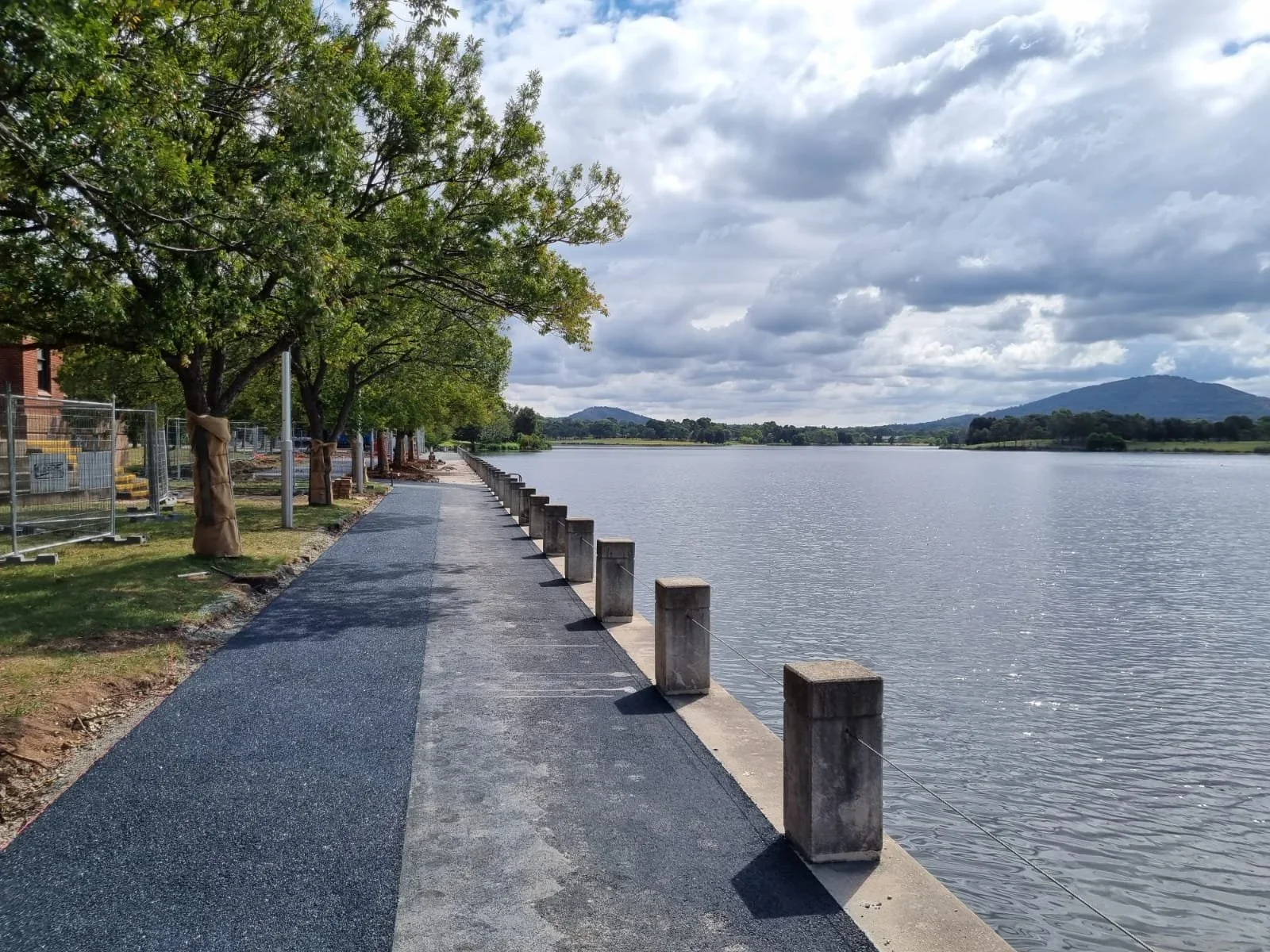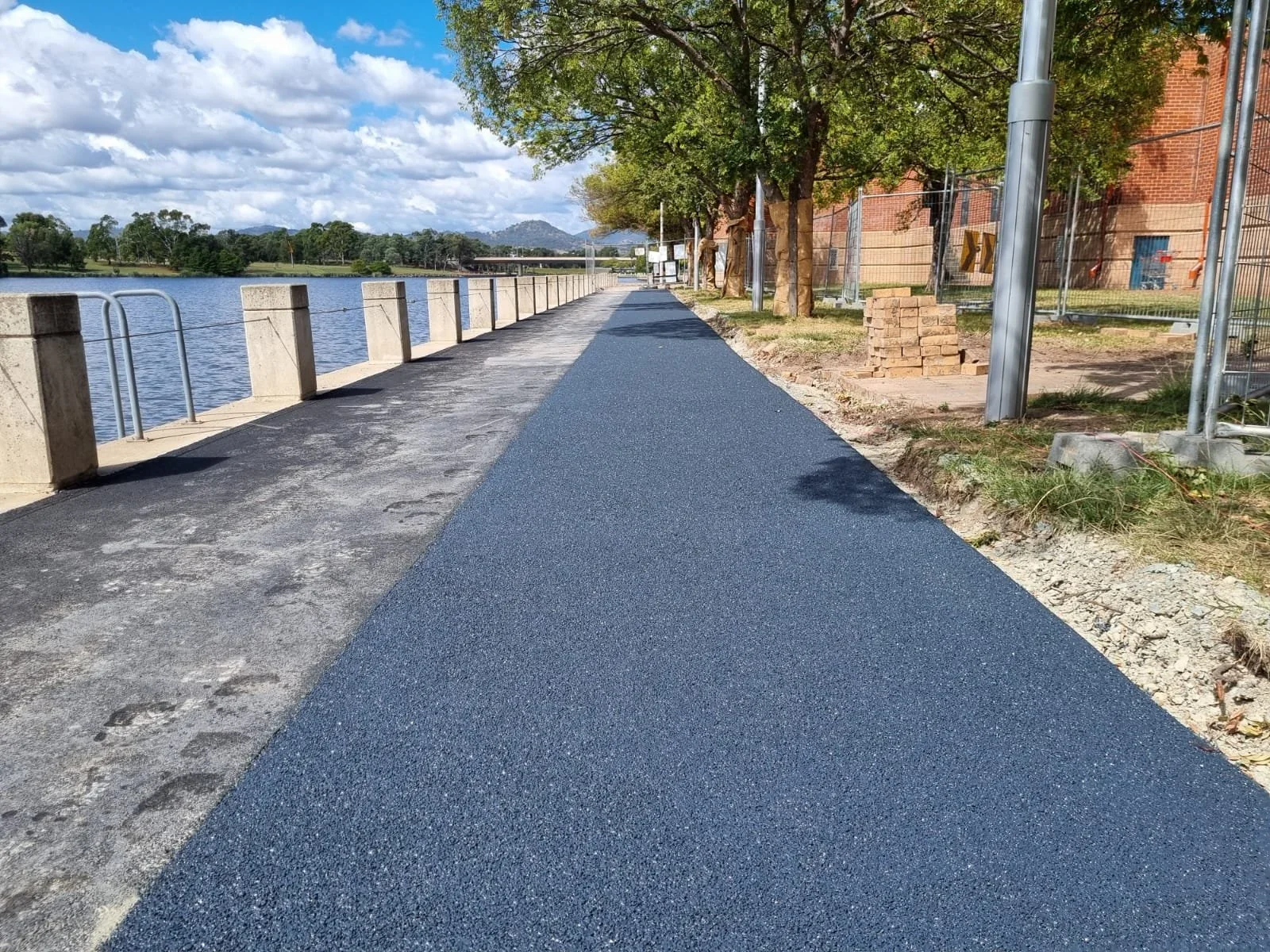Porous Lane Case Study: Tuggeranong Foreshore, ACT
Pictured above is Permeable pavement installation around Lake Tuggeranong. You can see the Tree Protection Zone along the foreshore.
Overview
On the Tuggeranong Foreshore in the ACT, a new 156 m² Porous Lane footpath has been installed, recycling 468 waste tyres into a durable and tree-friendly pavement. The project highlights how permeable surfaces can balance community access with long-term tree health.
Challenge
Large, established trees along the foreshore required a solution that would protect their access to water while avoiding future damage to paths caused by root growth and movement. Conventional paving risked cracking, lifting, and costly repairs, while also limiting water infiltration to the soil below.
The Solution
A dark grey Porous Lane footpath was laid adjacent to the trees, using a semi-flexible, permeable pavement mix. Designed to allow rainfall to infiltrate through to the roots, the pavement reduces surface runoff while maintaining structural strength. Its flexibility also helps absorb the impact of root movement, preventing the cracking and uplift commonly seen with traditional concrete.
Outcome
The installation successfully supports both community use and environmental resilience. The permeable surface delivers water directly to the trees, helping them to flourish, while reducing the risk of future maintenance caused by root disturbance. With minimal excavation required, the solution was less invasive, more sustainable, and ensures a longer-lasting asset for the foreshore environment.


